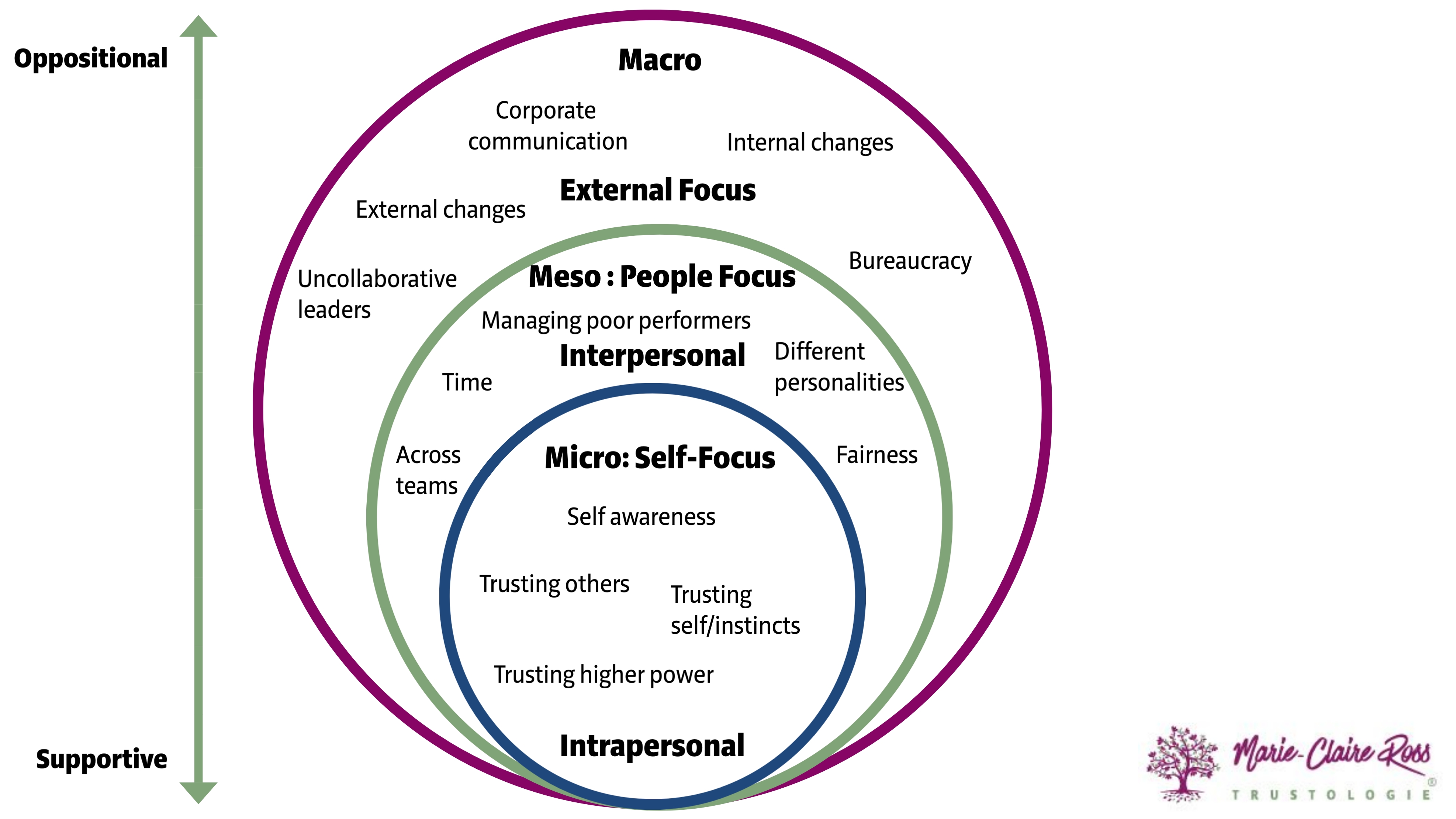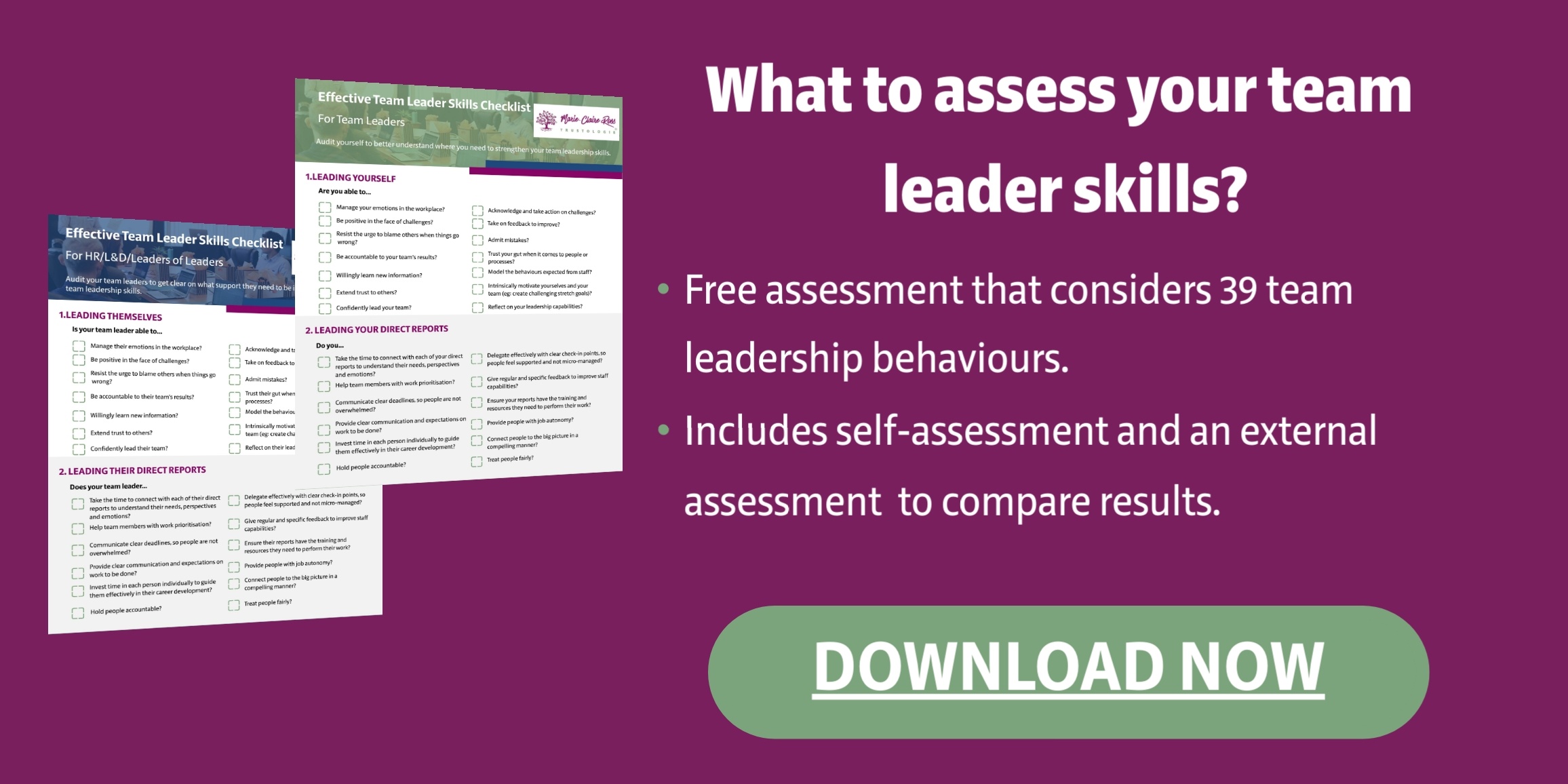How to Build Team Capability Using an Inside-Out Approach
One of the things I find fascinating about improving any sort of interpersonal or intrapersonal skill is that you have to start with yourself.
If leaders want to improve skills like confidence, self-awareness assertiveness or trustworthiness they need to consider working on two dimensions - internal and external.
The internal dimension is when you are able to see yourself clearly and understand your patterns, reactions, aspirations, your strengths and your shadows.
The external dimension is all about knowing how other people see you. When we are disconnected from how we come across, we can unintentionally offend people, and can sometimes be blindsided by critical feedback.
To improve any type of soft skill, we need to close the gap between how we see ourselves and how other people see us. Reducing the gap acts as an incentive and helps us focus on what we need to do.
In my Trust Forces model (below), from my book Trusted to Thrive: How leaders create connected and accountable teams (get a free chapter here), I talk about how leaders need to be strong in their core, or their intrapersonal skills, to better lead teams and withstand the external forces swirling around them.
As leaders, we need to work on improving our self-awareness and intrapersonal skills such as confidence, empathy, self-discipline and emotional regulation. We need to start inside, before we move out to better lead our teams.

Yet, when it comes to working with our teams during change and improving their technical capabilities, the inside-out approach, while still required, needs to shift.
Instead of moving from how I see myself to how the world sees me, we need to focus team members on improving their individual skills before we move into collective capabilities. It's about reducing the gap between the desired state of competence and actual competence both from an individual and team perspective.
Yet, leaders get this wrong. They look at upskilling the team collectively first, before they figure out how to lift the capabilities of individuals.
Building Team Capability During Change
It is very common for teams to have to learn new processes and master new ways of working. Whether it is prompted by strategic choices within the organisation to embrace new technology, comply with new regulations, or undergo significant structural transformations, it requires adapting both on an individual and team level.
Your team members have to individually learn new on-the-job technical skills, while also learning how to coordinate and communciate differently as a group (either within the team or outside of it).
For instance, accounting team members dealing with changing disclosure laws may need to individually excel in understanding new reporting rules. Additionally, they must also reevaluate their collaborative efforts within the team to establish robust internal control systems, as well as how to communicate changes to other teams.
However, leaders frequently fail to give sufficient consideration to whether, when, or how team members are reskilling - and when they do, their emphasis is often on the team as a collective entity.
According to a new research study, there are benefits to making individual reskilling a priority, then teamwork. Until team members fully develop their individual skills, it is more challenging for the team to achieve mastery and optimise collective coordination.
The study looked at a company in China with over 10,000 employees and 116 production teams. The teams were about to start changing how they worked.
To assess the effectiveness of the team before and after the transformation, the researchers focused on the company's measurement for success - yield. This metric evaluates the percentage of products that are produced accurately according to the technical specifications.
As expected, the impact of adapting to the change had a negative effect on the yield. Two weeks before the change, average yield stood at 99.15%.
This dropped down to 93.82%, four weeks after the change. This drop was not evenly distributed among all teams. Variations in the intensity of the change each team faced played a role in these differences. Some teams had a greater amount to relearn on both an individual and collective level.
However, teams that placed a higher priority on individual reskilling right from the beginning outperformed teams that solely focused on improving collective coordination by an astounding 12%.
What's even more intriguing is that the implementation of reward systems played a crucial role in achieving this outcome. Team members who were rewarded for their individual growth during the initial phase demonstrated exceptional progress in recovering from the challenges brought about by the change.
After two months, the average yield across all teams had successfully climbed back up to 96.95%. However, interestingly enough, there was still a significant difference in team performance compared to their performance before the change took place.
Teams that had embraced individual reskilling and were now wholeheartedly dedicated to collective coordination were surpassing their counterparts by a remarkable 11%. This shift in focus was made possible by implementing a reward system that fostered a collective mindset. Teams that prioritised team rewards during the later stages of change found it easier to transition from individual reskilling to collective coordination.
Improving your Team Inside-out
- Work with each employee individually to reskill - spend time with your reports to improve their capability, but also manage their emotions and provide positive feedback in one-on-ones.
- Give people space to make mistakes - enable people to safely experiment and master tasks alone. Giving people autonomy to work out what processes best work for them is important before moving to improve the team as a whole.
- Reward individual skills - you want to encourage individual reskilling and people applying themselves, pursuing personal goals and self-focus.
- Experiment with coordination and task flow - once people have mastered their individual tasks and are clear on what works, then encourage working together as a team to work out the best collective approach.
- Introduce team rewards - when the team starts working out the best practices, then greater emphasis should be placed on team rewards. By emphasising team-focused rewards among team members, it encourages a collective focus on learning and developing collaborative skills. These types of rewards foster a sense of unity, collaboration, and a shared commitment to achieving team goals.
Sequencing of rewards is critical. Reward the team too early and you fail to incentivise the individual reskilling that forms the basis of team action.
A two-Step Approach to a More Capable Team
If you need to lead your team through change, and grow their technical capabilities, you have to start with improving individual capabilities first. Individual skills serve as the building blocks for collective capabilities to flourish.
While if you need to improve team members capabilities around their interpersonal or intrapersonal skills (or even your own), start with their internal self awareness (getting them to discuss how they feel they behave in a certain way) before moving to their external self-awareness (sharing feedback from others on a certain behaviour).
You have to know the best way for you to work, before you can best work with others.
A two-pronged to learning, starting inwards before we go outwards, works towards helping people work better together with others.

